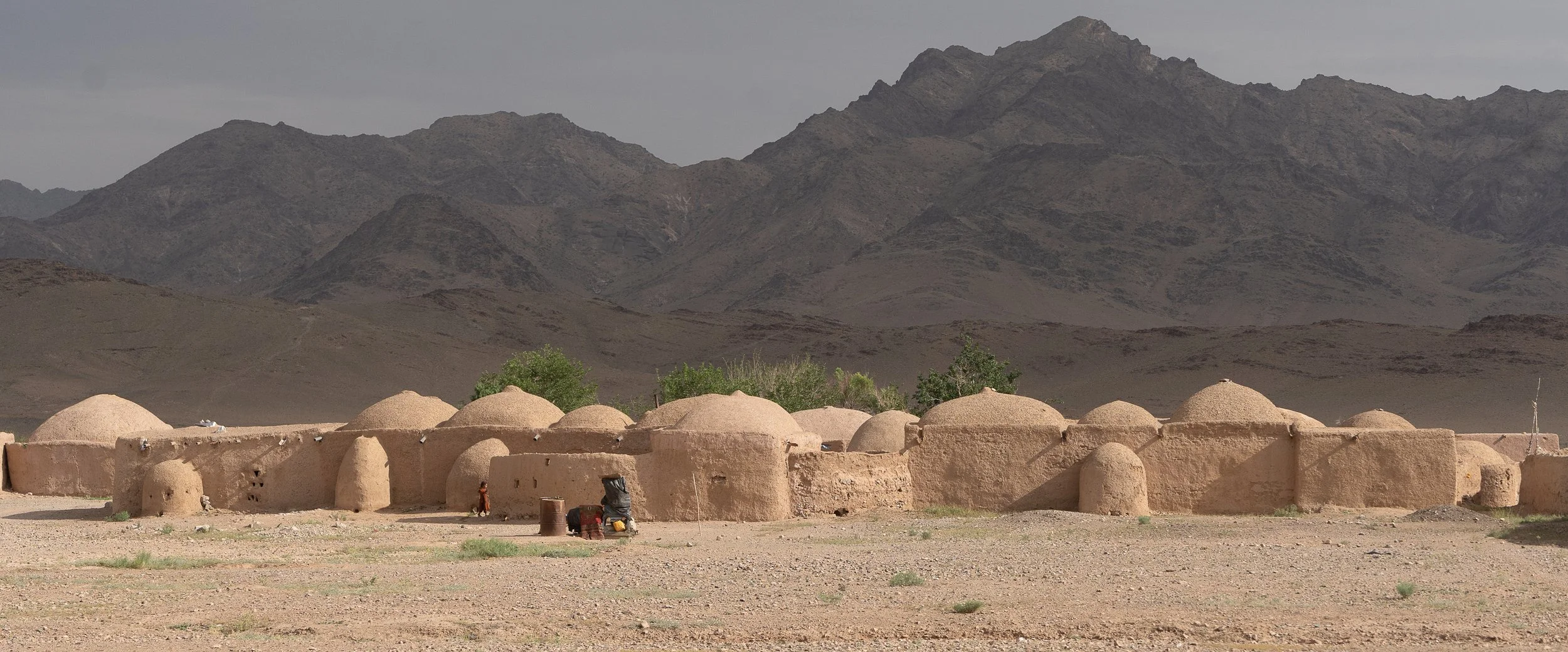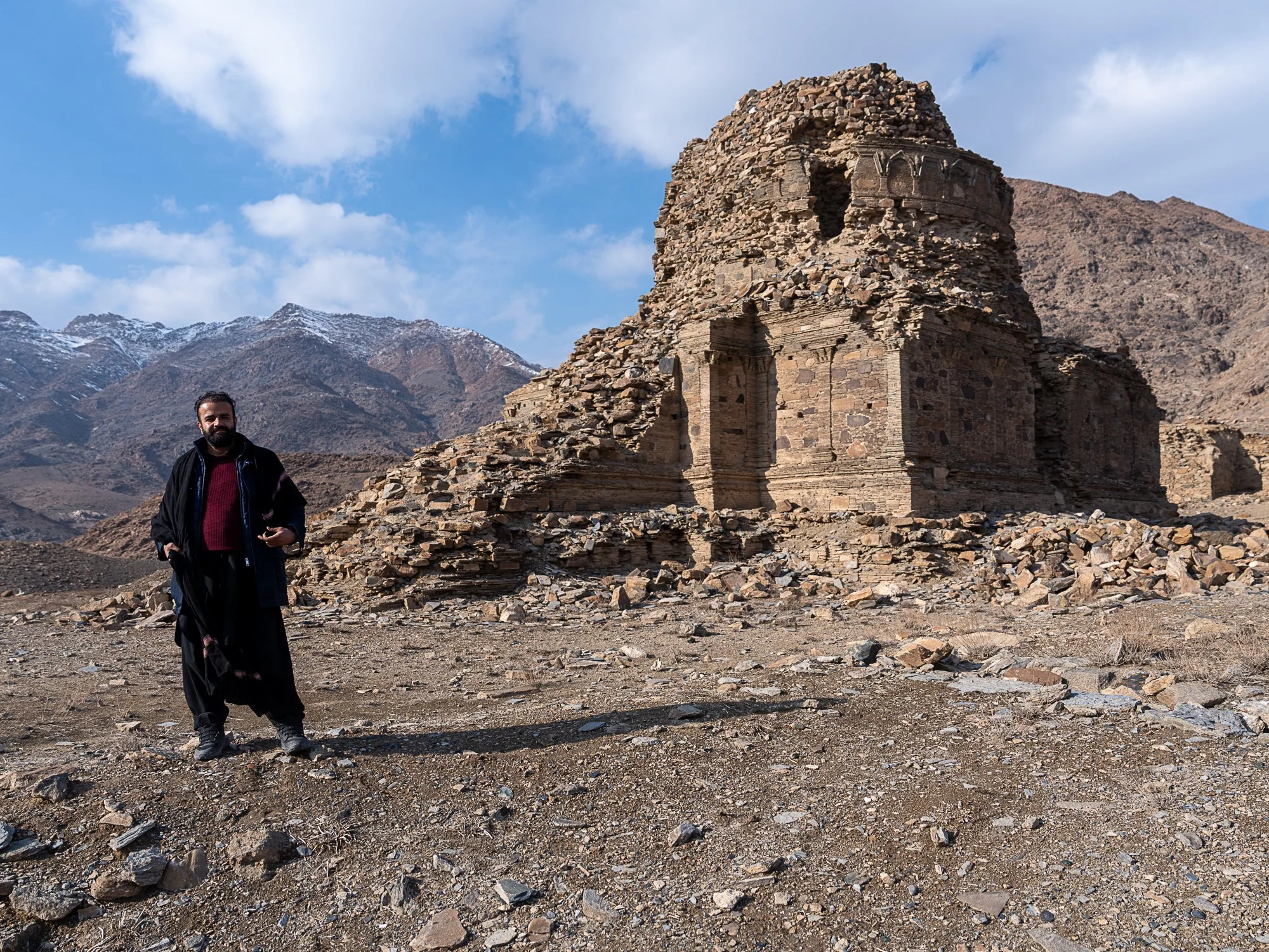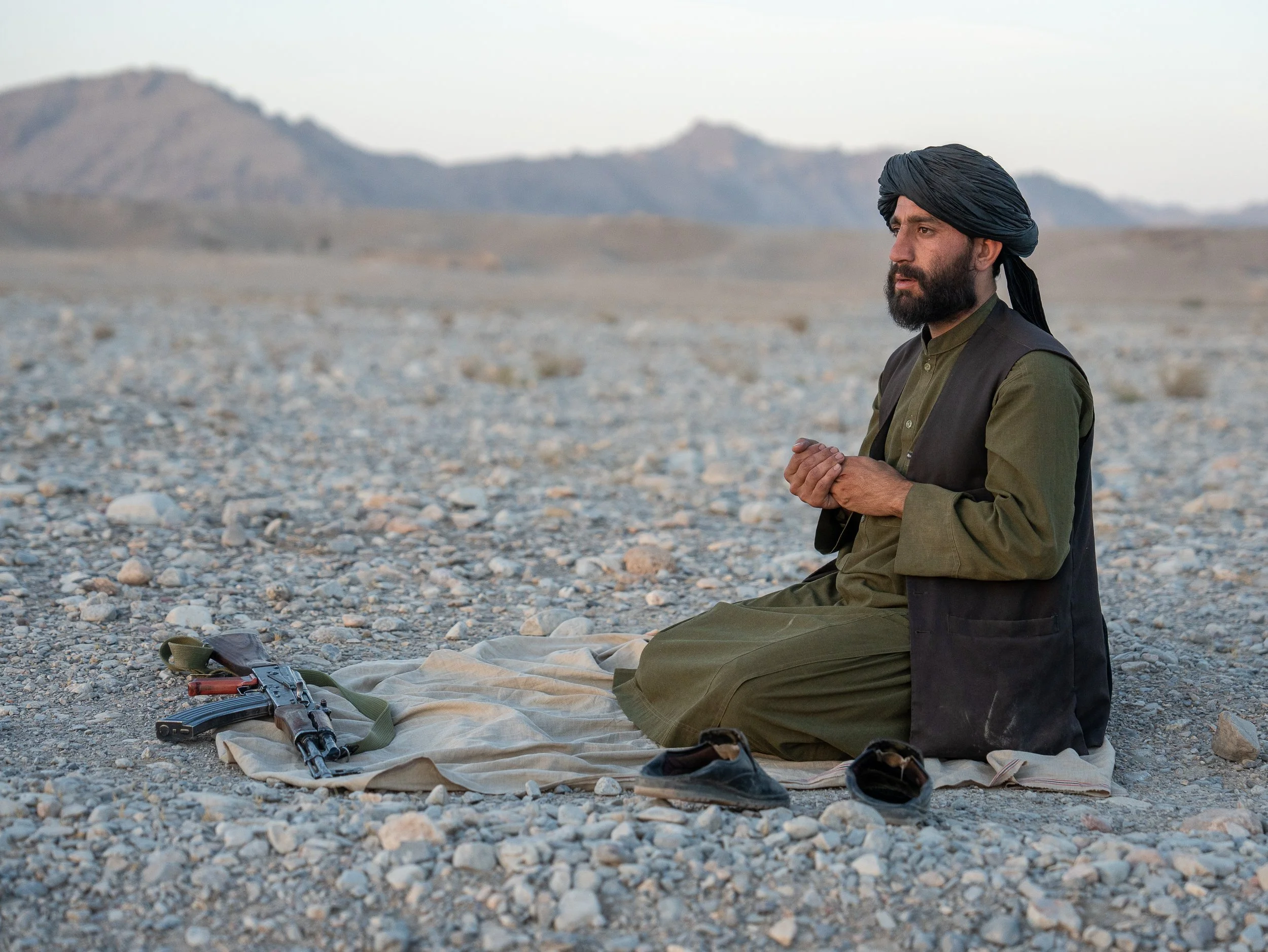What next for tourism in Afghanistan after the Bamyan attacks – a North Korean model?
A village in Farah province with traditional domed houses, designed to insulate against the province’s typically fierce heat.
The hills of Farah province are unseasonably green this spring and our “Past and Present” travellers were winding their way through the usually barren hills of the desert, as the pinks of blues of dusk filled the valley floor. Traveller John M from Long Island New York had taken control of the Bluetooth, and we were in our own little world of 60’s and 70’s rock through the perfect landscape.
As we reached the outskirts of Herat, my mobile phone lit up. A glut of messages, missed calls and satellite check in requests from friends and contacts in Afghanistan and beyond rushed in.
“Tell me it’s not you. Please tell me it’s not you. Please answer as soon as you see this message.” Read one from a former CNN colleague. A sinking feeling came over me and a lump formed in my throat. It felt like a great honeymoon was over. Three Spanish tourists lay dead in Bamyan - murdered in cold blood alongside their Afghan drivers and guides.
Three days later our own group cautiously rolled into Bamyan, home of the famous Buddhas and one of the few regions of Afghanistan that had always been considered safe and welcoming to foreign guests. The atmosphere was eerie. The manager of our favourite hotel in the valley sobbed as we arrived.
Our ‘Past and Present’ group in Bamyan a few days after the attack against Spanish Tourists.
We passed the small shop in the bazaar where the tourists had been attacked. But most importantly we spoke with our local contacts about what had happened as well as with the families and friends of the Afghan drivers and guides who had been injured and killed. We wanted to know exactly what happened, to make sure our group wasn’t at any further risk and adapt our plans as best we could. In Afghanistan our local network are our eyes and ears. In a land of hearsay, Chinese whispers and hidden agendas first person accounts are often the only way to reliably make decisions.
Whilst assessing our own decisions, news came through to us via Kabul that the Taliban would be making the following changes to the way foreign tourists are able to travel across Afghanistan:
⁃ Tourists travelling in certain provinces and in some areas would always require an armed Taliban escort.
⁃ Home-stays would now be banned across the country.
⁃ There would be an increase in the frequency and detail of the registration of foreigners at road checkpoints leading in and out of population centres.
⁃ A return to the requirement for foreigners to visit the offices of the Ministry of Information and Culture in each provincial capital to have their makhtub or permission papers signed and counter signed- a particularly tedious process with no obvious advantages to anyone’s security. It was from one of these very offices that the Spanish tourists were followed by their attacker.
For our travellers arriving in Bamyan this meant frustration on top of a trip already curtailed by the flooding of the road running through Ghor to the Minaret of Jam.
Road conditions in an unseasonably wet May meant out plans to visit the Minaret of Jam were curtailed.
The next morning our guests were forced to miss out on a peaceful dawn walk towards the remain of the Buddha’s of Bamyan whilst waiting for an escort. The ban on homestays meant that our chance to spend the night at the golden village of Shahrestan above the sparkling waters of Band-E-Ami was also cut.
That afternoon we spent several hours sitting baking at a checkpoint waiting for another escort to take us a few kilometres down the main road to Band-E-Amir, and progressed towards spending what felt like days being pinballed between disconnected commanders and competing Taliban members desperate to wield their pens in fervent displays of new ‘registration’ processes.
After nearly two weeks on the road the group made a call to curtail their visit to Bamyan and return to Kabul to allow the dust to settle on the new measures designed to keep foreign tourists safe. The most important thing was that we were heading home to our loved ones. We couldn’t imagine the pain that families both in Afghanistan and in Spain were feeling for the murdered tourists and guides.
An excuse to put the brakes on?
For now our hope is that the cumbersome measures introduced by the government in response to the attack on foreign tourists in May are temporary and that they are a knee-jerk response to a lone wolf attacker. But we also fear that these measures will be made permanent and are designed to move tourism in Afghanistan towards a “North Korean” model. Let me explain:
Over the last few months it is clear that there is an unhappiness from some members of the Taliban movement about the direction of the country’s tourism goldrush.
When the internationally recognised government fell in 2021, the few travellers who started to trickle into the country were a novelty, but still a real rarity. Even the most conservative of Pashtun-Talibs were curious to see the couple of mad foreigners passing through their towns and show off their victory over the most powerful countries in the world.
There were few if any ticketed sites and one of the great pleasures of visiting Afghanistan was the ability to almost stumble upon incredible historic ruins and remains, without the feeling of being a ‘tourist’. The feeling was more akin to being an ancient explorer, and during the first few months we genuinely felt we had ‘rediscovered’ some sites first recorded by adventurers like Charles Masson.
Lucy exploring the Kabul wall in the snow.
Noory posing for a photo next to Guldarra Stupa, 22km South of Kabul
Publicly the Taliban government has looked at tourism as a key source of foreign dollars, local employment and PR. A glut of YouTubers arrived in the country to declare the country safe, report glowingly on the local hospitality and pour scorn on mainstream accounts of the Taliban and the situation in Afghanistan generally.
The problem though is that for some members of the Taliban, what was an occasional amusement has become a daily irritation.
We have felt this shift personally. Members of the Taliban tasked with guarding or accompanying our guests in places which already required escorting like Balkh and Helmand have seemed increasingly reluctant, annoyed and critical of our plans and itineraries. Many seem embarrassed to be seen with foreign tourists especially in their own villages or communities – many of these men joined the Taliban movement inspired by tales of Jihad and fighting foreign powers, only to find themselves tasked with babysitting groups of mixed sex foreign non-Muslims.
We’ve experienced a growing trend for the Taliban to admonish our local guides and drivers personally. They’ve been asked sternly by members of the feared GDI intelligence department why they are working with foreigners, had their tazkera ID-cards threateningly photographed and their phone numbers recorded. They’ve been asked why they are bringing foreigners to the country after 20 years of jihad to rid Afghanistan of them.
The behaviour of members of the Ministry of Vice and Virtue is also increasingly bold across Afghan society and female guests have found themselves approached and advised to cover their faces on the street of Kabul. The ministry’s men who wear white lab coats as if they were doctors have also taken control of the guard posts at the Band-E-Amir national park and other sites, in response to the blind-eye which was being turned to female foreign tourists visiting the national park.
Taliban escort breaks for prayer in Helmand
What shall we do about it as travellers?
Not all of this is brand new. We’ve always experienced a slight reluctance to allow us as tourists to truly explore rural areas and village life away from the big cities. It’s why many of our itineraries are geared always towards heading to villages with ancient ruins or remains. Sometimes our guests are surprised at our willingness to drive several hours to visit the skeleton of an ancient fort about which we know nearly nothing. The truth is that the remains of a historic site are often an explainable entry ticket for us to argue for being able to stay with local people in a pretty village, nestled in the hills.
The truth is that the Taliban have never been delighted at the idea of foreigners mingling too freely amongst the population or wondering around the countryside. There’s too much risk that the tourists see strange goings on in villages, fields of forbidden opium poppies or get to talk to local people who share their grievances and problems. There’s also a risk that we spread strange ideas or foreign social conventions – normalising the mixing of sexes for example.
Wherever we go in Afghanistan we are advised by local officials that we are free to go and visit wherever we want. Yet we are also told that certain places are unsuitable for us to “do tourism”.
My immediate concern is that the Taliban are working towards a system where visitors will be forced to arrive at a suitable time at a pre-arranged list of ticketed sites wielding signed and counter-signed government permits arranged at great cost in the great warrens of Kabul’s ministries, during a limited set of office hours. They might be encouraged to buy some handicrafts from a selection of approved and most importantly licensed vendors, chosen to set up a small bazaar away from the main population centre.
These model tourists would then return to their vehicles, heading back to their licensed government hotels for the night by 5pm, enjoying stale Kabuli-Pulao in the hotel’s restaurant before leaving the province the next morning. In the minds of the Taliban everyone’s winner in this arrangement . The most important thing is that everyone gets paid and the tourists get to “do” their “tourism” - whatever that funny and peculiar ritual might be.
The reality for us will be far less bucolic. It will mean that our guests can spend little no time relaxing away from cities, getting to know Afghans, or freely interacting with local people. They’ll get no real sense of the country that we love, and spend the cool of dawn locked in their rooms locked away from the golden light bathing the hills. They’ll never smell the dew fall on a field of mountain flowers or wonder freely in the bazaar to buy piles of walnuts. My Afghanistan that we want to share with you is the morning birdsong carried to me over mud walls, woodsmoke sitting over villages as local men wonder across their fields wrapped in wool pattus.
Many of our guests enjoy the first time they spend sitting at a Taliban checkpoint – watching a throng of bearded Talibs assemble and pile into a Ford Ranger is a novelty. 20 kilometres later, the third or fourth checkpoint tends to be far less interesting and my fear is that the government is keen to force tourists into even further into exhausting schedules of car-based tourism, pinballing them between the larger district centres and only spending the smallest amount of time on their feet getting to know Afghanistan.
Already the feedback from Safarāt travellers is that they want to spend less time on the road and more time enjoying the country’s stunning scenery and life. Our guests would rather spends 2 nights in a small village, spending the day wondering around the local hills as opposed to rushing in and out of a ticked museum in a middling city whilst being instructed where and when to take a photo.
Lastly one of our main fears is that this attack will compromise what we set out to achieve in Afghanistan with our rural and community-based plan for tourism – our homestay program is extremely important to being able to put money back into small villages and being welcomed into rural areas as guests and friends. Many foreign tours operators put offer nearly no benefit into the communities that they are visiting – they pay the Taliban government for an every lengthening list of permissions that foreign tourists are required to wield, pay entrance fees at historic sites and pay large hotel owners for their stay, but apart from a few dollars dropped in local bazaars the benefit to rural communities they visit is almost none.
Already (and unsurprisingly) the new rules introduced in late May are at best being applied at best haphazardly – but it makes planning itineraries extremely difficult. Our own current plan is to let the dust settle over the summer, before returning to our former program starting out by using homestays in places where we already have a good relationship with the local GDI (intelligence department). We will be asking for a high degree of flexibility and understanding from our travellers though and be asking them to work with us – these hiccups are all part of the journey which is Afghanistan.
JB on a morning walk through the Hazara village of Danyul in Ghazni province where we our hosted.
Charlie F waking up in a homestay in Ghazni province. Our canvas tents allow us to stay in the courtyards and gardens of local people whilst respecting cultural norms and giving our travellers their own space to sleep in.








